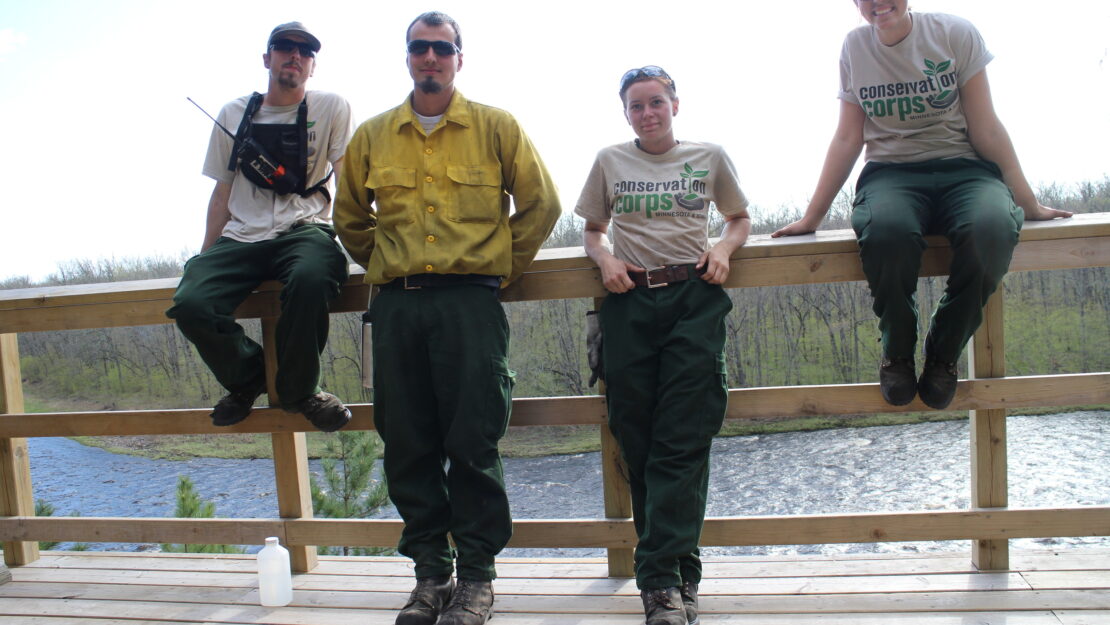A Project with a History

By: Danielle Yaste

Most projects that are worked on by the Conservation Corps of Minnesota involve crews working for short periods of time. A crew will come in and work for a week, sometimes a few more, occasionally returning later in the year. However, few crews will ever see the entire conservation/preservation project, start to finish, nor are they likely to see the true impact that the project has. Conservation projects often take years and involve multiple steps, people, and skills. A perfect example of the complexity of a project can be seen in the work being done at St. Croix State Park. St. Croix is the largest state park in Minnesota and has been connected to the Conservation Corps since its inception as the Conservation Civilian Corps in 1933. My crew is in its third week of prescribed burning preparation and implementation in St. Croix. We have started to see some of the earlier burns start to turn green, however, these small steps aside, many of the impacts of these burns will occur much further down the line.
Not only are the repercussions of the burns mostly to be seen in future years, but the purpose behind the burns spreads back many years as well. In 2011 St. Croix State Park experienced a storm known as a “Blowdown.” This storm involved straight line winds forcing canopy trees to the ground across more than 13,000 acres of the park. The result was a loss of hundreds of thousands of trees, some areas experiencing a 100% loss.
Though the park has utilized prescribed burning in the past, it has now become one of the powerful tools in the rehabilitation of the park. The burns push back Hazel and Aspen that threaten to take over the native Pine Forests. With the canopy gone, the understory took over the landscape, making it difficult for the white and red pines to bounce back.
For three weeks throughout the last few months we have prepped control lines, implemented burns, meticulously protected little pines during said burns, and have even planted new trees. These steps will continue to aid in the extensive rehabilitation of this treasured park. Complete rehabilitation from the effects of the blowdown will take many more years to come, and will no doubt, include a few more conservation corps crews or two.
